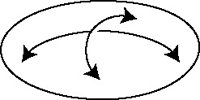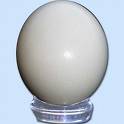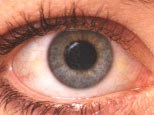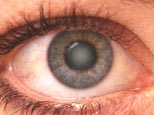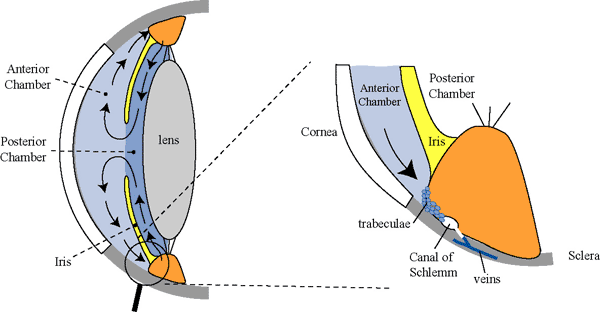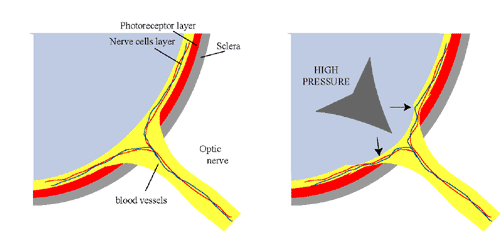F. Major Refraction Anomalies: Myopia and Hyperopia.
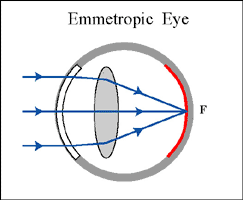 |
In an emmetropic eye, light rays from far away (thereby crearing parallel light rays) fall on the fovea. These patients do not need glasses when they look far away. |
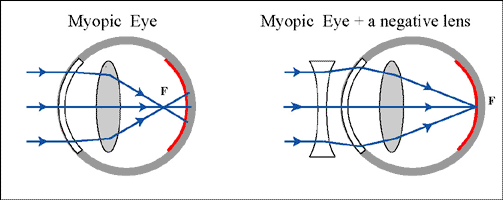 |
In a myopic eye (=myopia), light rays from far away fall in front of the fovea. To the patient, the image looks blurred. The solution is to provide th patient with a concave ("-") lens. Note that such a person can look sharp at images close to the eye (like reading) as this will move the focus towards the fovea. That is why these people are called "nearsighted" |
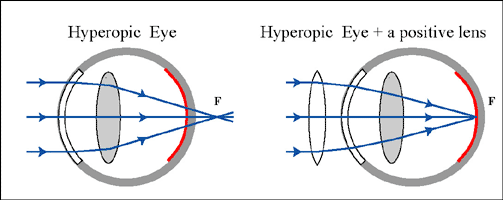 |
In a hyperopic eye (=hyperopia), parallel light rays will fall "behind" the retina. To help these patients, a convex ("+") lens is required which will help 'break' the light rays more. Note that these patients can (and do) help themselves by accomodating their lens. This will also move the focus onto the fovea. They do this automatically and therefore often they don't know that they have a refraction anomaly. They are therefore called "farsighted". They will often complain of headaches or tiredness as their ciliary muscle contracts all the time. |
